Abstract
Segregants from merodiploids heterozygous at two or more sites in the lac region were selected on the basis of containing a recombinant F-merogenote. Such recombinants frequently contained a recombinant chromosome as well. When the merodiploid was heterozygous at two sites, the frequency at which reciprocally recombinant chromosomes were present in the selected population was lower when the two marked sites were in the same gene and close together than when the sites were more widely separated. When the merodiploid was heterozygous at four sites and selection was made for an intragenic recombinational event, the recombinant chromosome was the reciprocal type about half the time and about half the time was not. Among the latter genotypes, most were nonrecombinant for the intragenic pair of markers. The data are consistent with a model in which recombination leads to the formation of two recombinant products, each containing a region of hybrid deoxyribonucleic acid.
Full text
PDF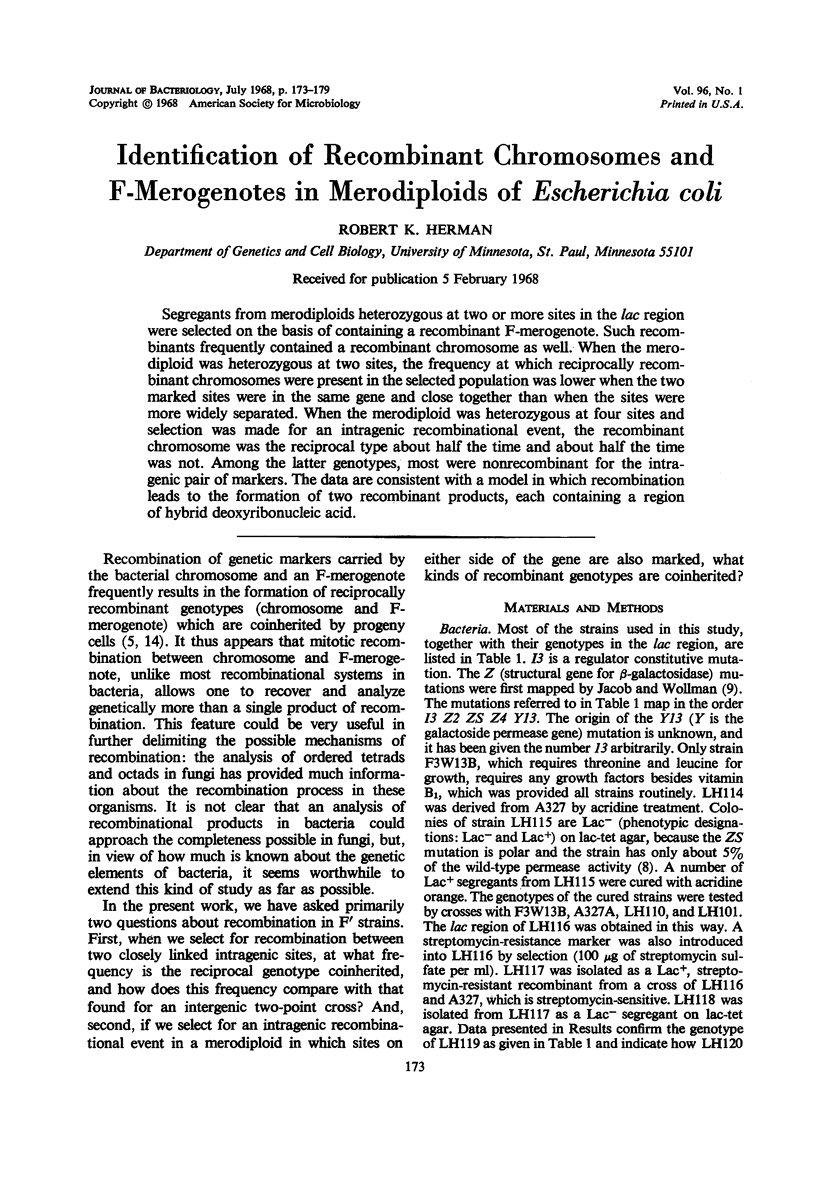
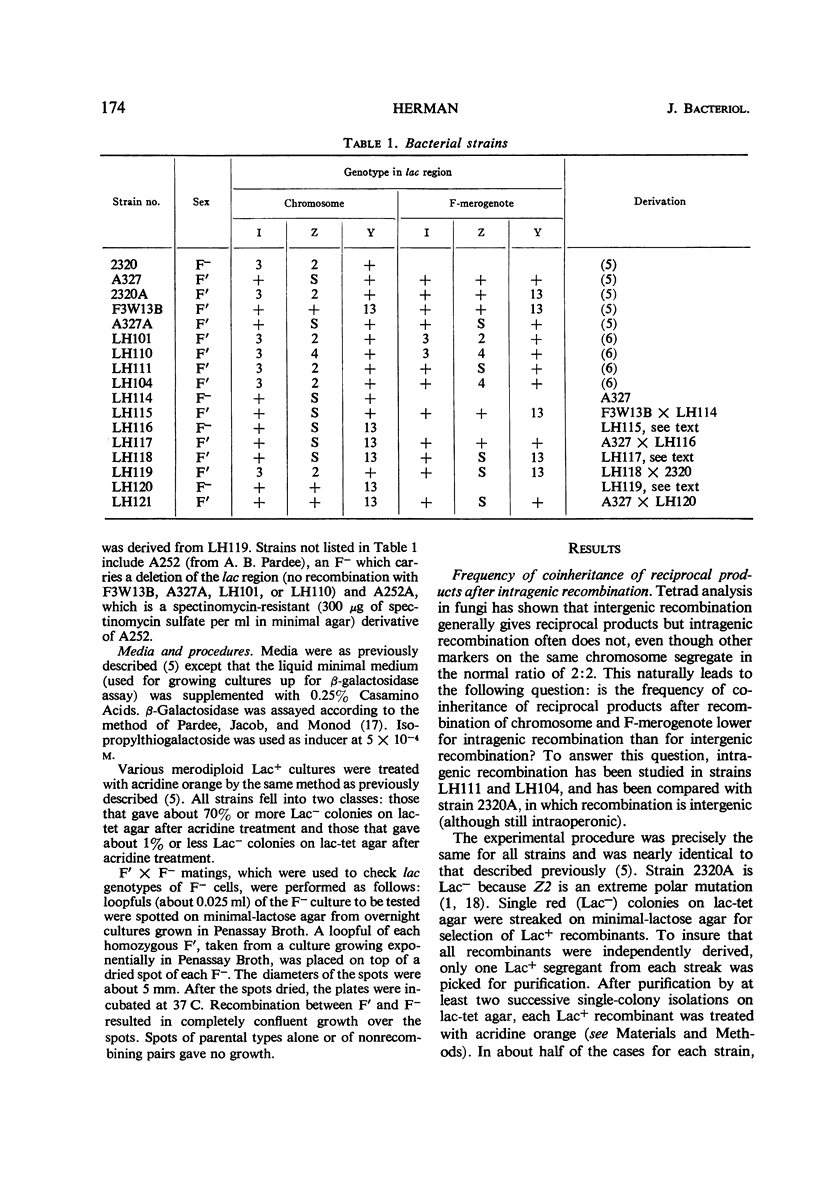
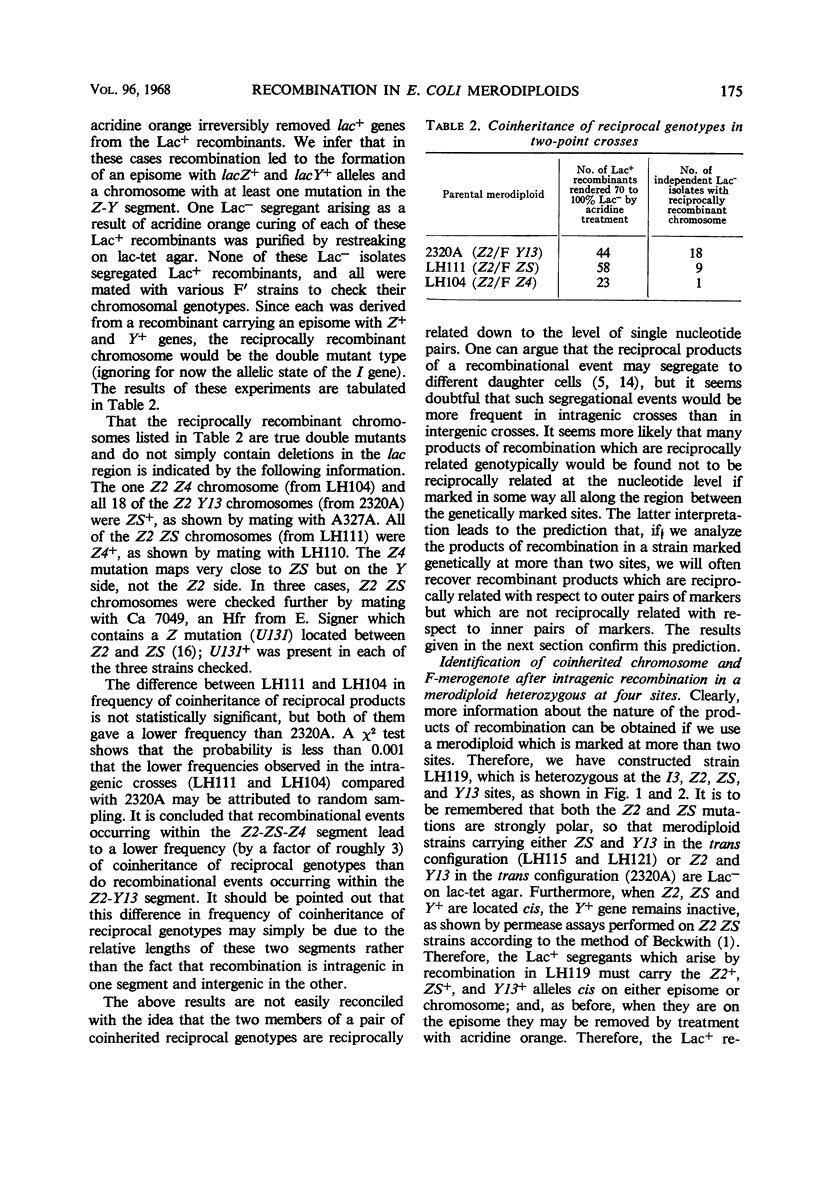
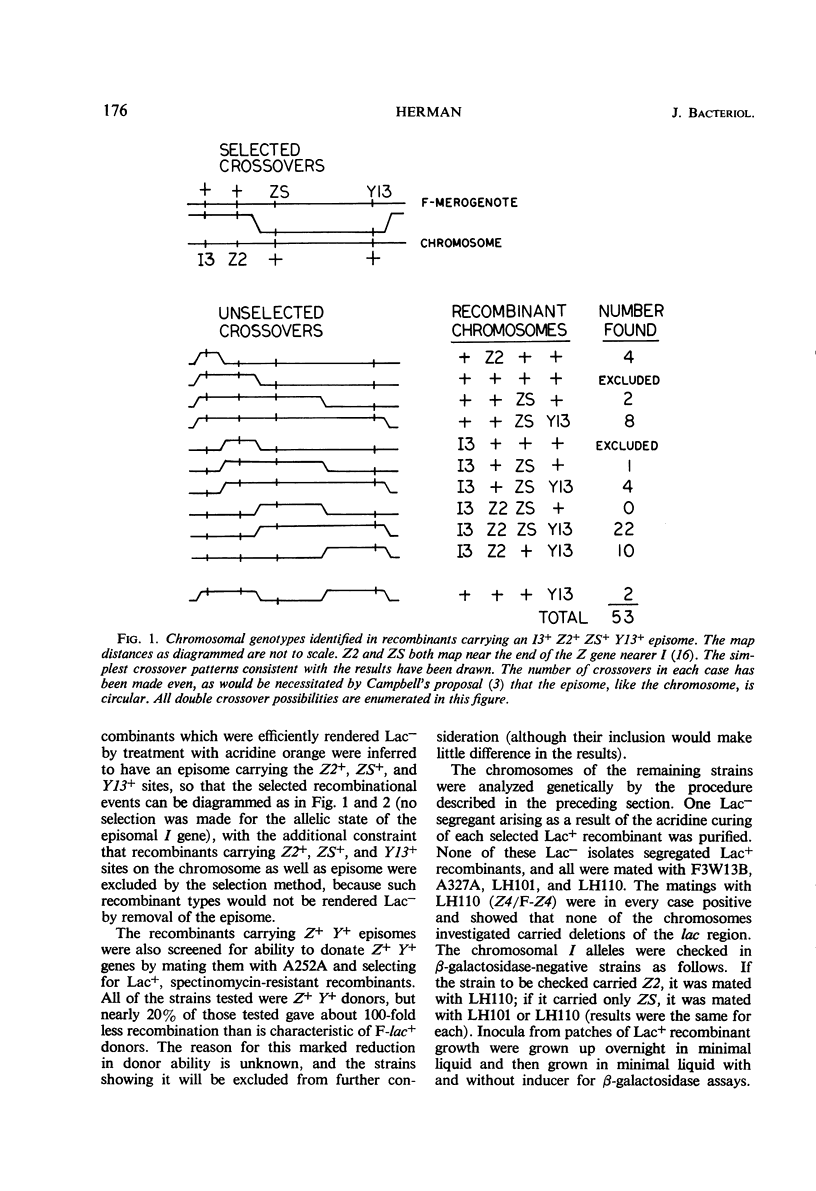
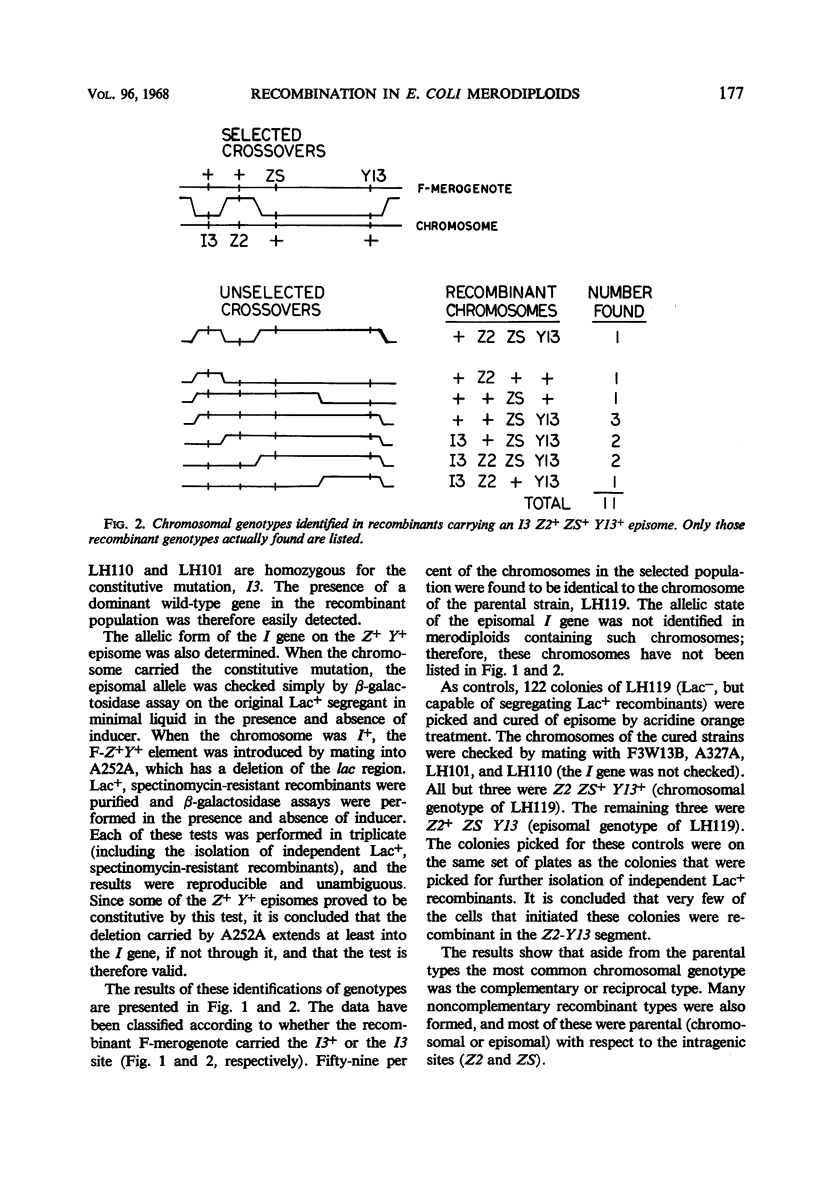
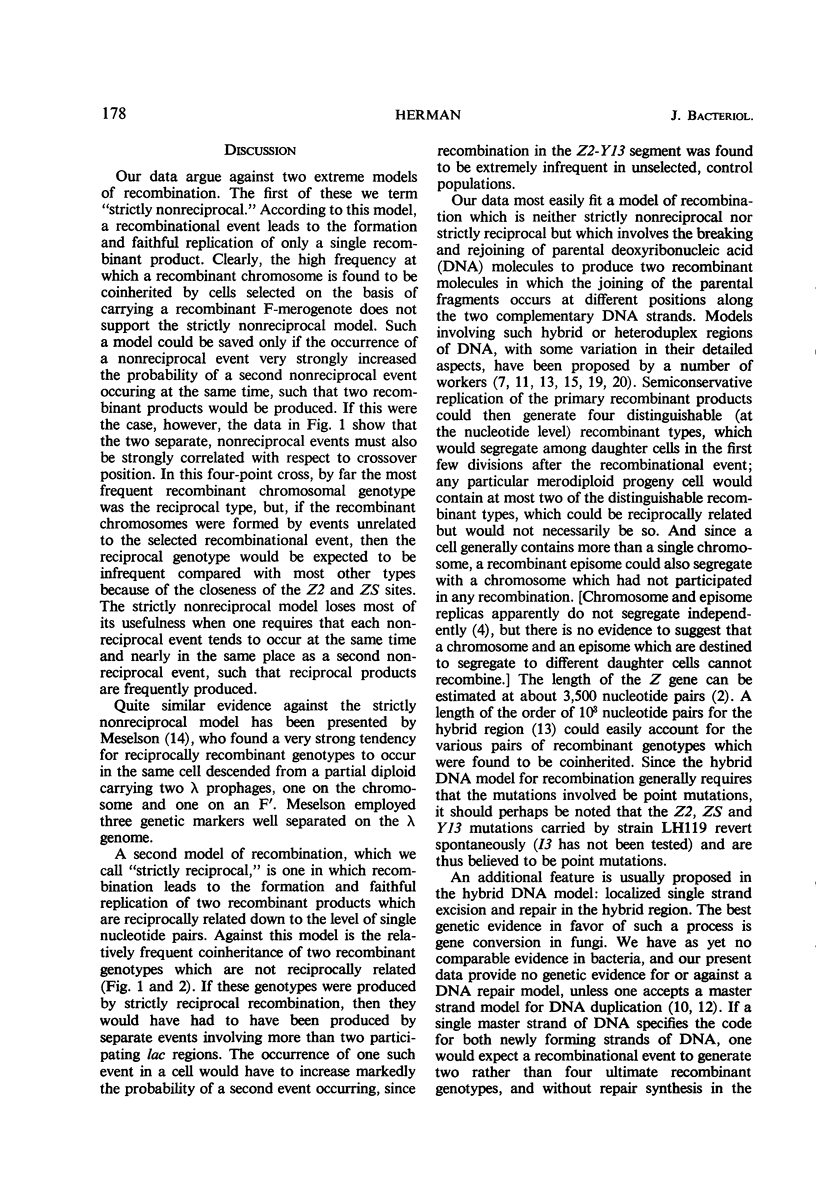
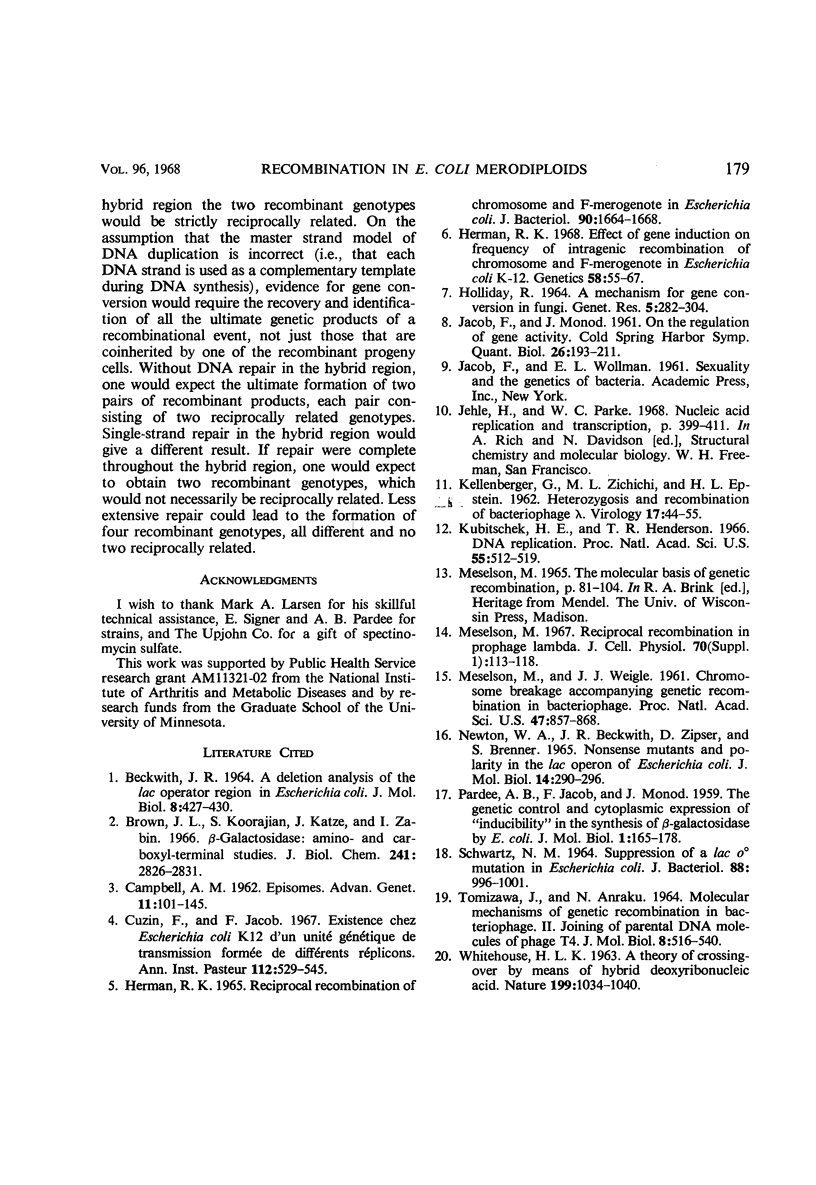
Selected References
These references are in PubMed. This may not be the complete list of references from this article.
- BECKWITH J. R. A DELETION ANALYSIS OF THE LAC OPERATOR REGION IN ESCHERICHIA COLI. J Mol Biol. 1964 Mar;8:427–430. doi: 10.1016/s0022-2836(64)80206-0. [DOI] [PubMed] [Google Scholar]
- Brown J. L., Koorajian S., Katze J., Zabin I. Beta-galactosidase. Amino-and carboxyl-terminal studies. J Biol Chem. 1966 Jun 25;241(12):2826–2831. [PubMed] [Google Scholar]
- Cuzin F., Jacob F. Existence chez Escherichia coli K12 d'une unité génétique de transmission formée de différents réplicons. Ann Inst Pasteur (Paris) 1967 May;112(5):529–545. [PubMed] [Google Scholar]
- Herman R. K. Effect of gene induction on frequency of intragenic recombination of chromosome and F-merogenote in Escherichia coli K-12. Genetics. 1968 Jan;58(1):55–67. doi: 10.1093/genetics/58.1.55. [DOI] [PMC free article] [PubMed] [Google Scholar]
- Herman R. K. Reciprocal recombination of chromosome and F. merogenote in Escherichia coli. J Bacteriol. 1965 Dec;90(6):1664–1668. doi: 10.1128/jb.90.6.1664-1668.1965. [DOI] [PMC free article] [PubMed] [Google Scholar]
- KELLENBERGER G., ZICHICHI M. L., EPSTEIN H. T. Heterozygosis and recombination of bacteriophage. Virology. 1962 May;17:44–55. doi: 10.1016/0042-6822(62)90080-6. [DOI] [PubMed] [Google Scholar]
- Kubitschek H. E., Henderson T. R. DNA rplication. Proc Natl Acad Sci U S A. 1966 Mar;55(3):512–519. doi: 10.1073/pnas.55.3.512. [DOI] [PMC free article] [PubMed] [Google Scholar]
- MESELSON M., WEIGLE J. J. Chromosome brekage accompanying genetic recombination in bacteriophage. Proc Natl Acad Sci U S A. 1961 Jun 15;47:857–868. doi: 10.1073/pnas.47.6.857. [DOI] [PMC free article] [PubMed] [Google Scholar]
- Meselson M. Reciprocal recombination in prophage lambda. J Cell Physiol. 1967 Oct;70(2 Suppl):113–118. doi: 10.1002/jcp.1040700409. [DOI] [PubMed] [Google Scholar]
- Newton W. A., Beckwith J. R., Zipser D., Brenner S. Nonsense mutants and polarity in the lac operon of Escherichia coli. J Mol Biol. 1965 Nov;14(1):290–296. doi: 10.1016/s0022-2836(65)80250-9. [DOI] [PubMed] [Google Scholar]
- SCHWARTZ N. M. SUPPRESSION OF A LAC O-O MUTATION IN ESCHERICHIA COLI. J Bacteriol. 1964 Oct;88:996–1001. doi: 10.1128/jb.88.4.996-1001.1964. [DOI] [PMC free article] [PubMed] [Google Scholar]
- TOMIZAWA J. I., ANRAKU N. MOLECULAR MECHANISMS OF GENETIC RECOMBINATION IN BACTERIOPHAGE. II. JOINING OF PARENTAL DNA MOLECULES OF PHAGE T4. J Mol Biol. 1964 Apr;8:516–540. doi: 10.1016/s0022-2836(64)80009-7. [DOI] [PubMed] [Google Scholar]
- WHITEHOUSE H. L. A THEORY OF CROSSING-OVER BY MEANS OF HYBRID DEOXYRIBONUCLEIC ACID. Nature. 1963 Sep 14;199:1034–1040. doi: 10.1038/1991034a0. [DOI] [PubMed] [Google Scholar]


